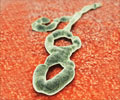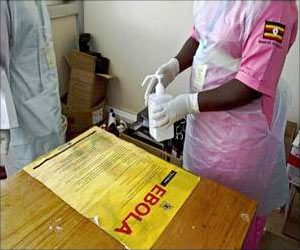The Ebola Reston Virus (ERV) that had infected some of the 301 monkeys in an unnamed facility was of little or no threat to healthy adults.

The virus was detected last week after the monkeys were observed to be suffering from measles, which could have lowered their resistance to Ebola, said Garin. The facility’s workers have tested negative for ERV antibodies after their blood samples were sent to the Research Institute for Tropical Medicine using the method Elisa, or enzyme immunosorbent assay, she said.
Also very few details were given about the facility, its identity was kept unknown and also whether the monkeys were being bred for export to other countries’ laboratories was not disclosed. But the monkeys will be continued to be observed she said.
“There are many forms of Ebola, and ERV is the tamest type of virus to healthy humans. Some Ebola virus have a tremendous effect on animals, but not much on humans. This is a possible case of ERV,” she said.
ERV was different from the deadly Ebola-Zaire strain, she said. The Ebola-Zaire strain infected 759 people and killed 467 in Zaire, West Africa. By August 2015, the Ebola outbreak in West Africa recorded 28,000 cases with 11,302 deaths worldwide.
The regional office of World Health Organization in Manila has been informed, she added. Of the 5 subtypes of Ebola virus, the Zaire, Sudan, Bundibugyo subtypes are associated with deadly hemorrhagic fever in humans while the Cote d’Ivoire and Reston are not, according to the WHO.
Advertisement
A thorough study and investigation on where the virus came from and how and how and to what extent the virus has affected the animals is being conducted by the DOH and the Department of Agriculture.
Advertisement
Source-Medindia














